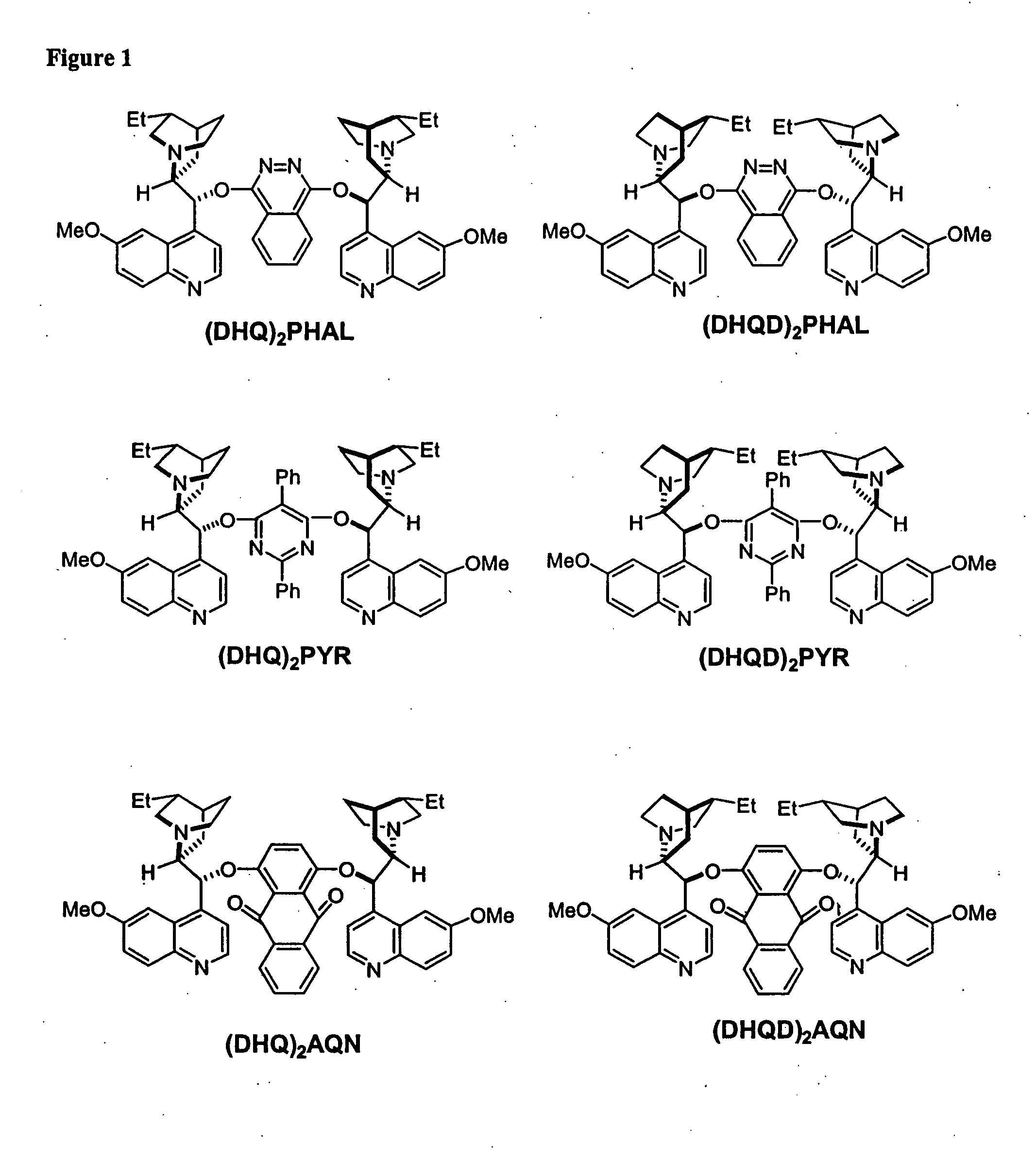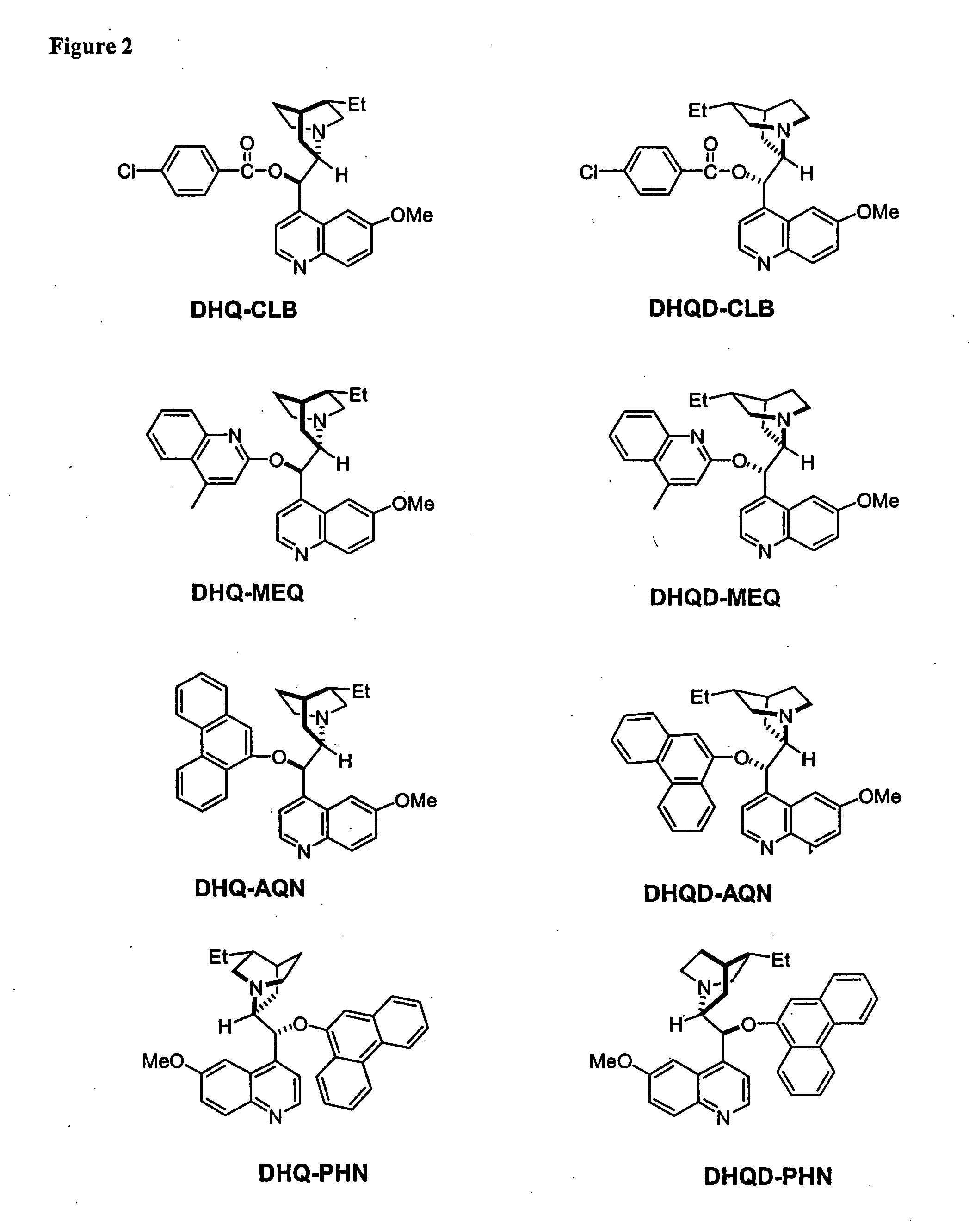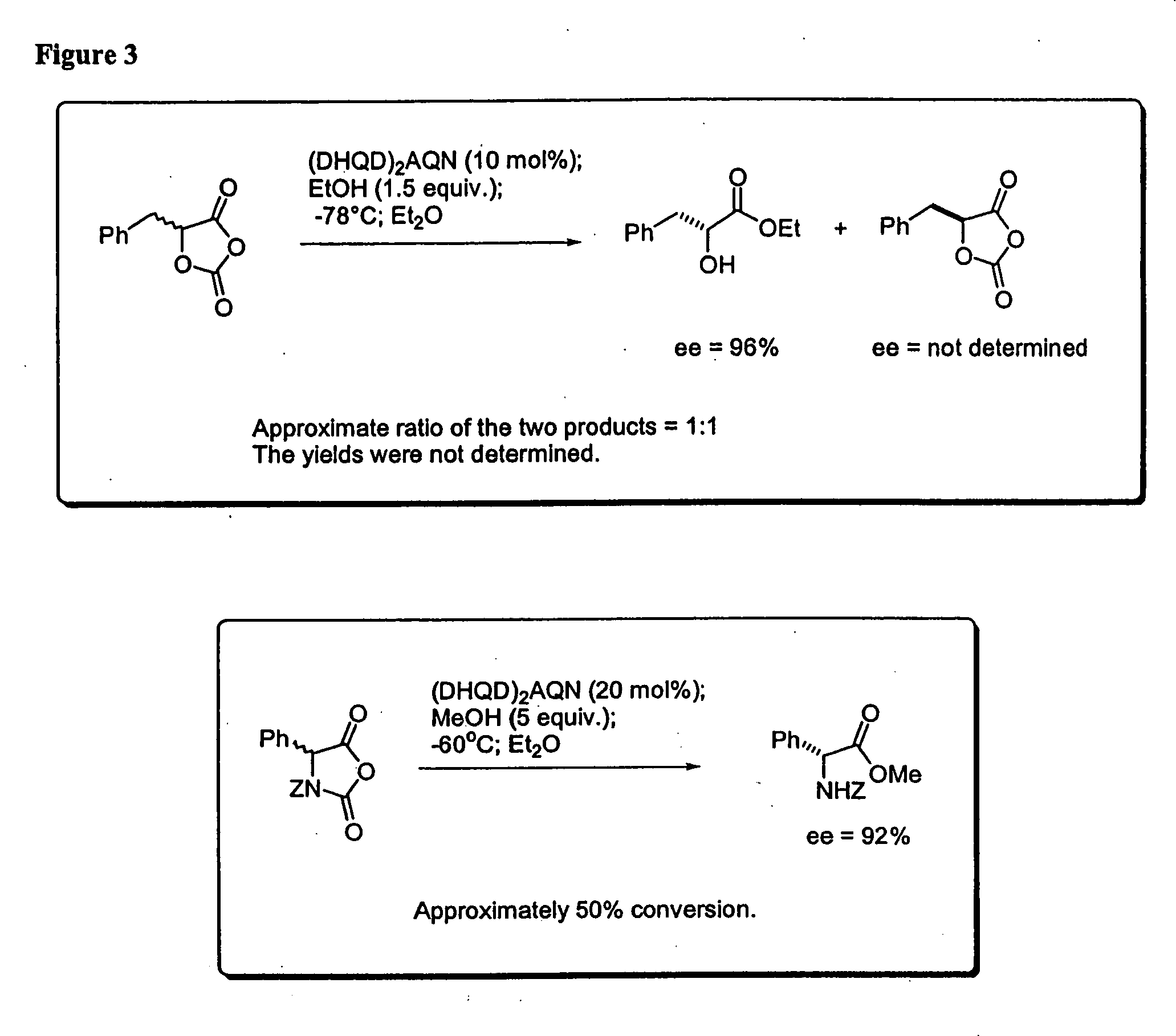Kinetic resolutions of chiral 2- and 3-substituted carboxylic acids
a carboxylic acid and chiral 2- and 3-substitute technology, applied in the preparation of asymmetrical anhydrides, carboxylic compound preparations, organic racemisation, etc., can solve the problems of reducing efficiency, wasting half of the material, and inconvenient and time-consuming each method
- Summary
- Abstract
- Description
- Claims
- Application Information
AI Technical Summary
Problems solved by technology
Method used
Image
Examples
example 1
Dynamic Kinetic Resolution of 5-Phenyl-1.3-dioxolane-2.4-dione Using (DHQD)2AQN
A solution of 5-phenyl-1,3-dioxolane-2,4-dione (17.8 mg, 0.1 mmol) and (DHQD)2AQN (18.2 mg, 0.02 mmol) in anhydrous diethyl ether (4 mL) was treated with absolute EtOH (9 μL) at −78° C. The resulting reaction mixture was stirred for 8 hours at this temperature. The reaction was then quenched with HCl (0.2 N, 5 mL). The organic phase was separated, and the aqueous phase was extracted with diethyl ether (2×2.0 mL). The combined organic layers were dried over anhydrous sodium sulfate and concentrated in vacuo. The residue was purified by column chromatography (silica gel, Hexane / Ethyl Acetate=2:1) to afford the mandelic ethyl ester as a colorless oil (12 mg, 67% yield). The enantiomeric excess of the mandelic ethyl ester was determined to be 97% by chiral “PLC analysis.
example 2
Dynamic Kinetic Resolution of 5-Phenyl-1.3-dioxolane-2.4-dione Using Quinidine
A solution of 5-phenyl-1,3-dioxolane-2,4-dione (17.8 mg, 0.1 mmol) and quinidine (6.5 mg, 0.02 mmol, 97% pure) with 10 mg dry 4 angstrom molecule sieves was treated with EtOH (9 μL) in one portion at −78° C., then the reaction mixture was stirred for 8 hours at this temperature. The reaction was quenched with a large excess of methanol. The conversion was determined to be 52% by GC. The enantiomeric excess of the product was determined to be 85% via chiral HPLC.
example 3
Kinetic Resolution of Racemic 5-Benzyl-1-aza-3 oxolane-2,4-dione Using (DHQD)2AQN
To a solution of racemic Phenylalanine UNCA(15.3 mg, 0.047 mmol) and (DHQD)2AQN (7.7 mg, 0.009 mmol) in dry diethyl ether (3.5 mL) at −60° C. was added dry methanol (0.25 mmol) in one portion. The resulting clear solution was stirred at −60° C. for 5.5 hours. The reaction mixture was quenched with HCl (2 N, 2.0 mL). The organic phase was separated, and the aqueous phase was extracted with ether (2×1.0 mL). The combined organic layers were washed with HCl (2 N, 2×1.0 mL), followed by NaOH (2 N, 1×3.0 mL), dried over anhydrous Na2SO4, and concentrated in vacuo to give the amino ester as a colorless oil (7.0 mg, 47% yield). The basic aqueous phase was acidified to pH<3 with concentrated HCl, and extracted with ether (2×10 mL). The combined organics were dried over anhydrous Na2SO4, and concentrated in vacuo to give the amino acid (5.2 mg, 37% yield). The enantiomeric excess of the amino ester and ...
PUM
| Property | Measurement | Unit |
|---|---|---|
| enantiomeric excess | aaaaa | aaaaa |
| structures | aaaaa | aaaaa |
| time | aaaaa | aaaaa |
Abstract
Description
Claims
Application Information
 Login to View More
Login to View More - R&D
- Intellectual Property
- Life Sciences
- Materials
- Tech Scout
- Unparalleled Data Quality
- Higher Quality Content
- 60% Fewer Hallucinations
Browse by: Latest US Patents, China's latest patents, Technical Efficacy Thesaurus, Application Domain, Technology Topic, Popular Technical Reports.
© 2025 PatSnap. All rights reserved.Legal|Privacy policy|Modern Slavery Act Transparency Statement|Sitemap|About US| Contact US: help@patsnap.com



